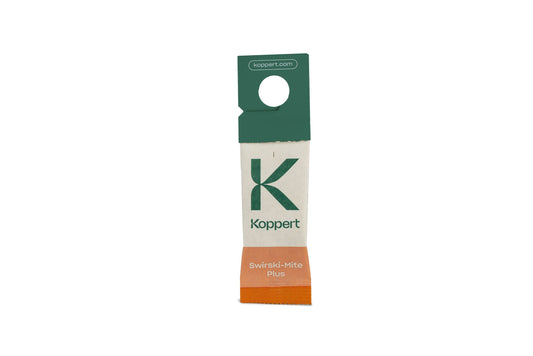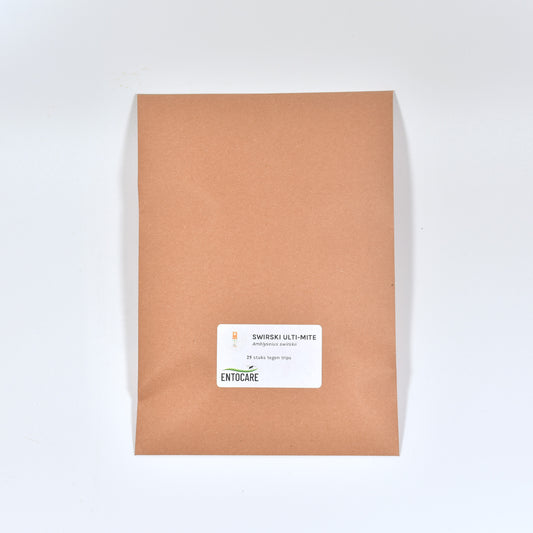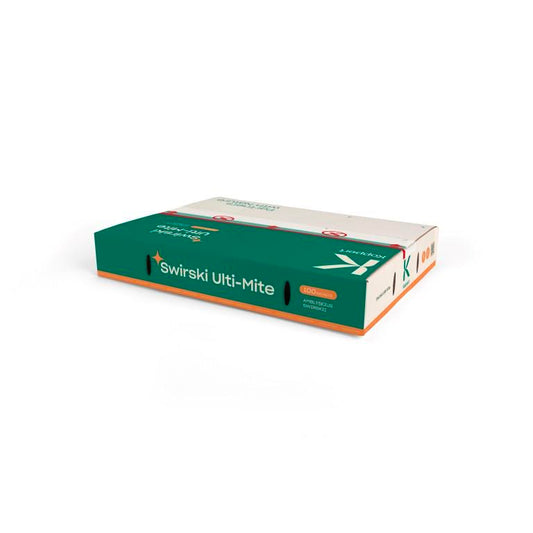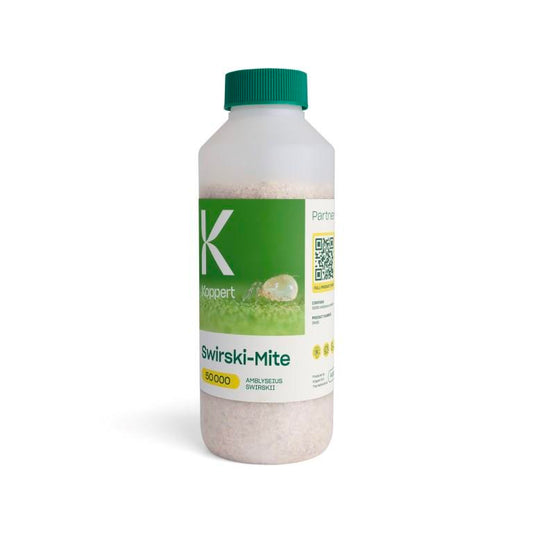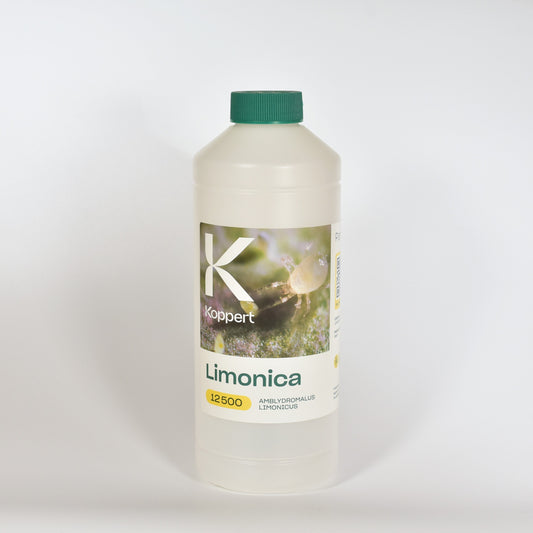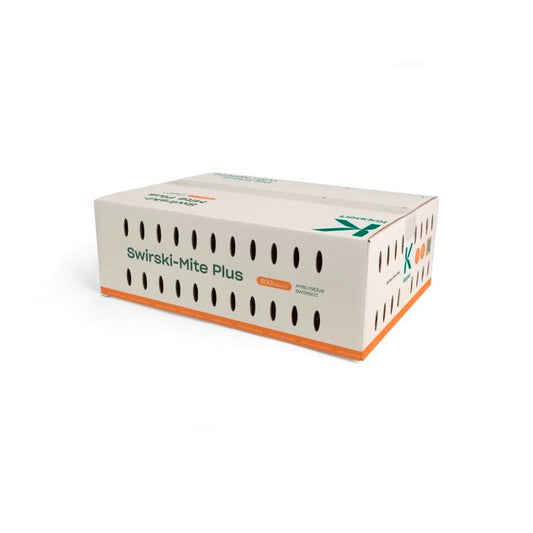
How to recognize tarsonemid mite
Tarsonemid mites have a wide host range. In the Netherlands, several species are found that often occur in production crops, especially since the use of broad-spectrum pesticides is reduced. Tarsonemid mites are very small (0.1 – 0.3 mm) and barely visible with the naked eye. Their bodies are elongated and shiny translucent. Males often carry young females with them so they can mate when the female reaches the adult stage. This ‘carrying’ is typical for tarsonemid mites. The eggs are oval and translucent and are usually deposited in closed growth tips and on the underside of young leaves. The soft skin of tarsonemid mites does not protect them from dehydration, so they aggregate in humid places.
Two common species of tarsonemid mites are broad mite and cyclamen mite.
Broad mite (Polyphagotarsonemus latus)
Broad mites are small (0.15 mm), oval-shaped and translucent, colored yellow green to dark green. Hind legs of male mites are formed into threadlike structures, that are used to carry the developing females. Females mites have a white length stripe on the back. The eggs are elongated, oval-shaped, large and translucent with white stripes. The females deposit 60 to 70 eggs over the course of 10 days. The mites are usually found in growth tips and flower buds, but also on leaves.
clamen mite (Tarsonemus pallidus)
The cyclamen mite is a small mite (0.25 mm). Adult mites are transparent to light brown colored, elongated and somewhat oval. Male hind legs are formed into threadlike structures, that are used to carry the developing females. Larvae are whitely colored. Cyclamen mites are usually found in flower buds, growth tips and closed leaves.
Tarsonemid mite damage and distribution
Tarsonemid mites are not very mobile. Dispersal over long distance is done by other insects (e.g. whitefly and aphids) and mechanically by humans during crop maintenance. During feeding, toxic substances are secreted that cause damages like deformation or death of growth tips. Damaged leaves get a light green to bronze color. Damaged leaves will drop early.
Products against Tarsonemid mite
-
SWIRSKI-MITE PLUS - 25
Vendor:KoppertRegular price €22,68 EURRegular priceUnit price / per -
SWIRSKI ULTI-MITE - 25
Vendor:KoppertRegular price €29,25 EURRegular priceUnit price / per -
SWIRSKI ULTI-MITE - 100
-
SWIRSKI-MITE - 50.000
-
SWIRSKI-MITE PLUS - 100
-
LIMONICA - 25000
-
SWIRSKI-MITE - 250.000
-
SWIRSKI-MITE PLUS - 500
-
Life cycle tarsonemid mite
60 to 70 eggs per female
optimal survival and reproduction between 20 °C and 30 °C
development at 18°C is 7 days
development at 25°C is 4,5 days
dies when RV drops below 70% -
Host plants tarsonemid mite
broad mite:
egg plant, begonia, gerbera, paprika, tomato
cyclamen mite:
ornamental crops, especially Azalea and cyclamen

